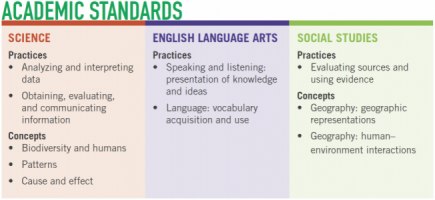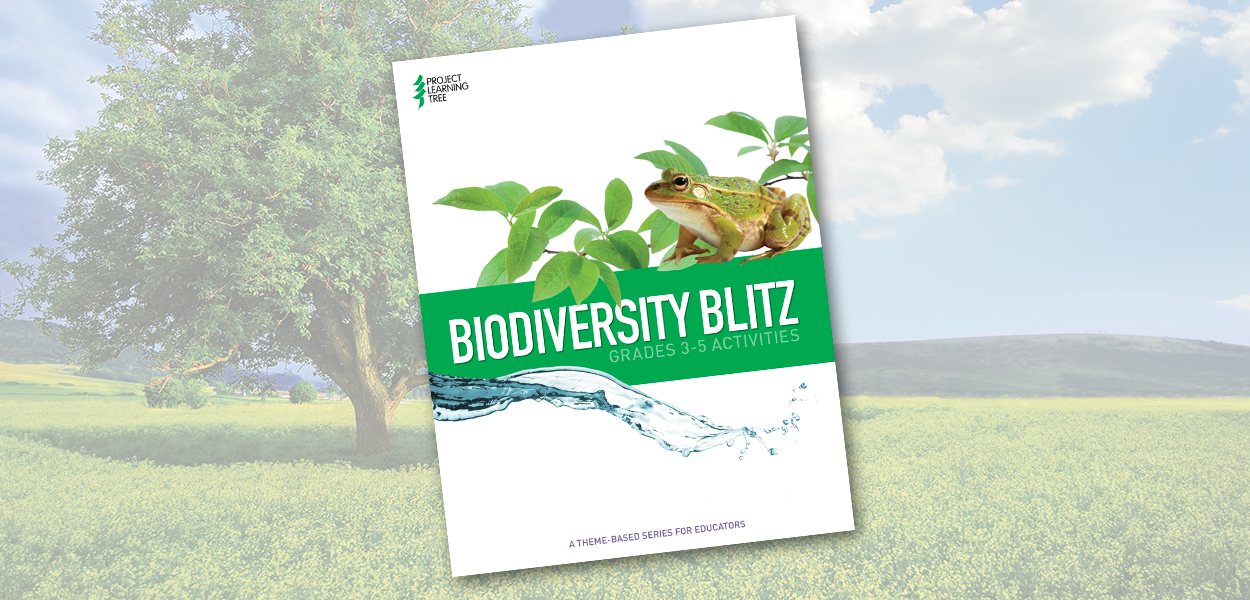Biodiversity Blitz
Biodiversity Blitz for Grades 3-5
PLT’s Activity Collection provides content in support of an identified theme for a particular grade level. Designed to be flexible, the activities that comprise each collection can be used as individual, stand-alone lessons, or all together as a cohesive unit of instruction using a storyline technique.
Biodiversity Blitz is the third collection of activities to be released as part of this new themed series for educators. It features three PLT activities for educators of students in grades 3-5 that invite learners to investigate variability among species in an ecosystem, and how this variability – or biodiversity – helps sustain life on Earth.
The Diversity of Life
Biodiversity is one of the most important indicators of an ecosystem’s health. That is because biological richness means organisms have more options to get the food and other resources they need. And greater biodiversity means a greater ability to cope with change. Even if some species face food shortage, habitat loss, climate change, or other threats, the ecosystem as a whole is more likely to sustain itself.
Three hands-on activities, with an emphasis on science, English language arts, math and social studies, engage students in learning about why biodiversity is one of the most important indicators of an ecosystem’s health, and how greater biodiversity means a greater ability to cope with change.
Features:
- Multidisciplinary activities integrate core discipline areas, including STEM subjects, reading, writing, and social studies.
- Hands-on activities connect children to nature in the city and the outdoors and are designed to develop students’ critical thinking, problem-solving, and decision-making skills.
- Background information, suggestions for enrichment, and student assessment tools for teachers.
- Copyright-free Student Pages, or worksheets, can be easily loaded to Google Classroom.
- Explicit connections to academic standards for science, English language arts, and social studies.
- New supporting features include “Differentiated Instruction” techniques, “Take It Outside!”, “Did You Know?” forest facts, plus a “Career Corner” within each Student Page introduces youth to forest-related careers.
Learning Progressions
Storylines provide connectedness and continuity to individual activities and can serve as the instructional glue that holds areas of knowledge and skills together. The activities in Biodiversity Blitz may be linked together into a unit of instruction using a storyline technique, such as the one that follows.
- Guiding Question: What is biodiversity and why is it important?
- Storyline: Students investigate to find out ways that species are adapted for survival and how the biodiversity of species in an ecosystem contributes to its stability.
Charting Biodiversity
Students explore the amazing diversity of life on Earth and discover how plants and animals are adapted for survival. This activity helps students understand why there are so many different species and teaches them the value of biodiversity.
Discover Diversity
Students imagine that they are visitors from outer space, viewing life on Earth for the first time. By describing in minute detail all the life they find in a small plot of land, they will become more aware of the diversity and abundance of life.
Web of Life
By conducting research and modeling a food web, students take a close look at a forest ecosystem and discover ways that plants and animals are connected to one another.
Classroom educators and nonformal educators alike need to ensure that instruction helps diverse learners meet rigorous academic benchmarks. Each PLT activity displays explicit connections to practices and concepts mandated by the following national academic standards. See example below.

EE Resources
“Bee” a Friend to Pollinators
This PollinatorLIVE video highlights a Texas high school’s success in creating a pollinator garden. They also showcase the benefits of “bee”ing a friend to pollinators and provide tips on how your school can too.
Login to download supporting materials such as appendices and teaching tips.
Login
 Get this Guide
Get this Guide
 Find Training
Find Training




